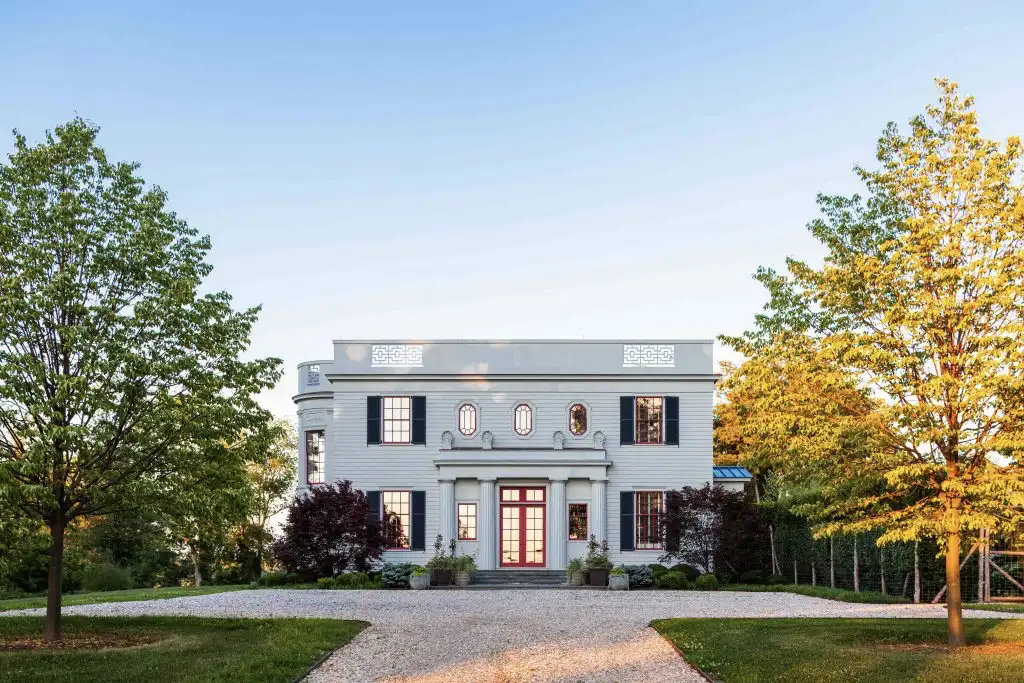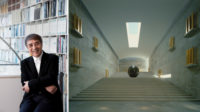Architect, educator, and author Peter Pennoyer was recently named the 2024 recipient of the Richard R. Driehaus Prize, an annual award established in 2003 at the University of Notre Dame honoring “a living architect whose work embodies the highest ideals of traditional and classical architecture in contemporary society, and creates a positive cultural, environmental, and artistic impact.” As founding principal of Peter Pennoyer Architects (PPA), a 50-person New York–based firm with a satellite office in Miami, Pennoyer joins past laureates including Jaquelin T. Robertson (2007), Robert A.M. Stern (2011), Michael Graves (2012), and 2023 recipient, Ben Pentreath.
The $200,000 prize is named for the late Richard H. Driehaus, a Chicago investor, philanthropist, and champion of historic preservation. Also announced alongside Pennoyer was urban planner and civic leader Maurice Cox as recipient of the Henry Hope Reed Award, a $50,000 prize recognizing individuals “working outside the practice of architecture who have supported the cultivation of the traditional city, its architecture and art through writing, planning, or promotion.” Both Pennoyer and Cox, who is the former mayor of Charlottesville, Virginia, and former commissioner of the City of Chicago’s Department of Planning and Development, will receive their respective awards at a public ceremony in Chicago this weekend, on Saturday March 23.
In its citation, the 2024 Driehaus Prize jury praised Pennoyer for producing a “visionary” body of work that “consistently demonstrates his ability to design beautiful and durable buildings with a nuanced elegance that moves the spirit of all who experience them.”
Pennoyer’s “design work is engaged in both the recovery and the renewal of tradition,” the citation continues. “Individual projects are restrained in scale and proportion, harmonious in form and distinct in materiality, exhibiting a sense of decorum. Every one of his buildings — whether set in the city or in the countryside — enhances the natural character of their sites.”

House in Millbrook (2013) in New York's Hudson Valley. Photo © Eric Piasecki/PPA, courtesy University of Notre Dame
A New York City native and graduate of the Columbia Graduate School of Architecture, Planning and Preservation, Pennoyer worked in the offices of Robert A.M. Stern Architects in the early 1980s before establishing Pennoyer Turino Architects with partner James Turino, and later in 1990, PPA. With more than 200 built projects under its proverbial belt spanning new construction, renovation, and historic preservation, Pennoyer’s eponymous firm has garnered acclaim working across a variety of typologies, including educational and cultural commissions and myriad private residences ranging from Manhattan brownstone renovations to stately country homes. His firm also designed the 12-foot-tall Art Deco clock at the SOM-reimagined Moynihan Train Hall in New York.
A common thread throughout Pennoyer’s work is an “extraordinary compositional care and the highest degree of craftsmanship, down to the last detail,” said Stefanos Polyzoides, Driehaus Prize jury chair and the Francis and dean of the University of Notre Dame’s School of Architecture. Joining Polyzoides on the 2024 jury was Melissa DelVecchio, partner at RAMSA; Michael Lykoudis, professor of architecture at Notre Dame; Léon Krier, architect and urbanist; Elizabeth Plater-Zyberk, founding principal of DPZ CoDesign and professor at the University of Miami; Demetri Porphyrios, principal of Porphyrios Associates, London; and Julia Treese, partner at Berlin-based Treese Architekten.
In addition to his work with PPA, Pennoyer, is an adjunct professor in the Urban Design and Architecture Studies program at New York University and has penned numerous books concerning classical architecture, many of them monographs co-authored with architectural historian Anne Walker. A lifetime member of the Society of Architectural Historians and president of the Whiting Foundation, he has also served on various boards including the Municipal Art Society of New York, the Institute of Classical Architecture and Art, and the U.S. General Services Administration’s Design Excellence Program.






Post a comment to this article
Report Abusive Comment